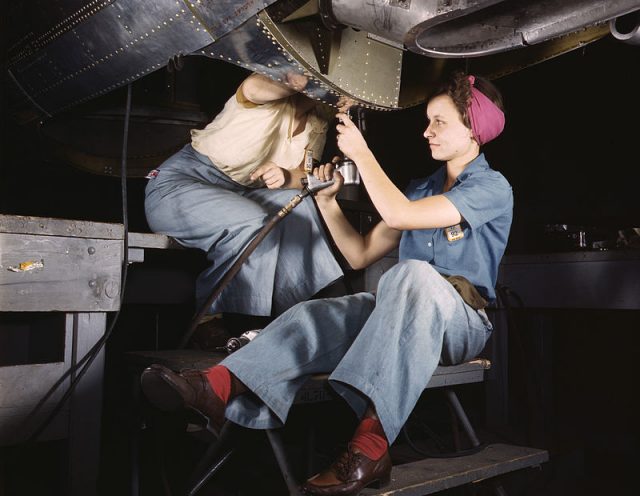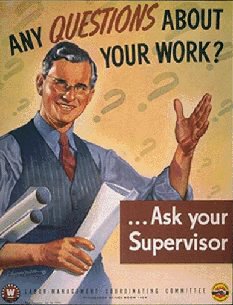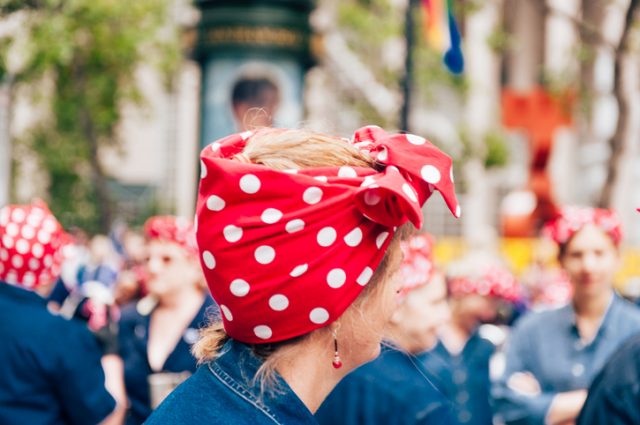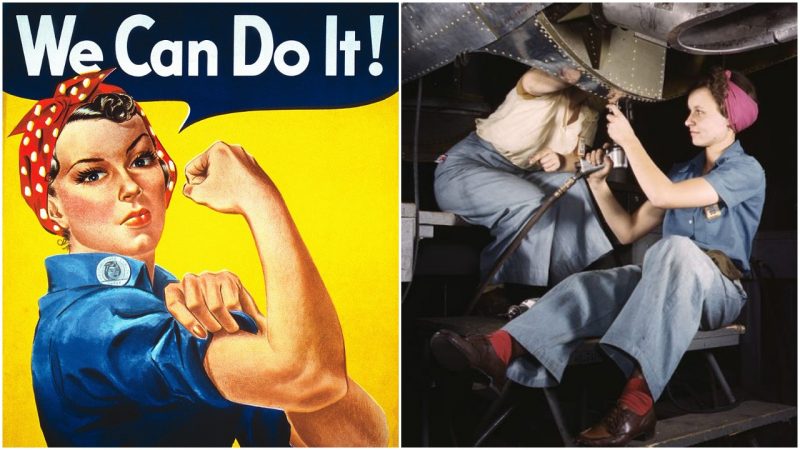You recognize the image as an icon of feminist strength: against a bright yellow background, she poses in a blue workshirt, sleeves rolled up to reveal her impressive biceps, a fetching curl escaping from beneath her red-and-white polka-dotted bandanna. She doesn’t smile, she looks at you directly, her left eyebrow cocked as if to ask, You got a problem? Over her head, a speech bubble proclaims enthusiastically, “We Can Do This!”
Rosie the Riveter, right? A government-recruitment poster during World War II exhorting women to join the work forces since their men were away at war. Immortalized in the swing-band pop song “Rosie the Riveter,” which landed on the Hit Parade. True history buffs might even recollect a “real” Rosie the Riveter: Rose Will Monroe.
Well, yes, sort of. Not exactly, no.
The image we call Rosie the Riveter today was not well known in the 1940s. She was, in fact, created in 1942 by a Pittsburgh artist, J. Howard Miller, for the Westinghouse Company. The poster was displayed in Westinghouse factories and was meant to boost productivity, encouraging employees to get back to work! Stay focused on the job! It came down off the walls after a few weeks and disappeared into obscurity for four decades.

Miller was thought to have used as inspiration a photo of a young war worker erroneously identified as Geraldine Hoff Doyle. Years later, evidence revealed the young woman to be a Naval worker from California named Naomi Parker Fraley. But no matter. Neither was actually “Rosie” anyway.
In fact, the public first met “Rosie the Riveter” through the Four Vagabonds’s popular version of the Redd Evans and John Jacob Loeb song blaring over the radio in early 1943. It no doubt reached the ears of Norman Rockwell, who was commissioned to paint a version of Rosie for the May 29, 1943, cover of the Saturday Evening Post, which then had a weekly circulation of 3 million.
10 Influential Quotes from 10 Powerful Women of the 20th Century
Clad also in a blue workshirt and equally buff, this Rosie had a riveting gun in her lap, one arm resting on her lunchbox, on which was etched “Rosie,” and her feet atop a copy of Hitler’s Mein Kampf. Rockwell used as his model his neighbor Mary Doyle Keefe, then a petite 19-year-old telephone operator who had never been near a factory. He later apologized to the tiny Mary for blowing her muscles out of proportion, but she didn’t mind. The original oil painting is on view at the Crystal Bridges Museum of American Art in Benton, Arkansas.

Meanwhile, theaters began showing promotional shorts in between features to encourage the purchase of war bonds. When the actor Walter Pidgeon went to an aircraft factory in Ypsilanti, Michigan, to appear in one of the films, he found out the factory really had a Rosie the Riveter—Rose Will Monroe.
The coincidence was irresistible: She was cast in the film. “Mom happened to be at the right place at the right time,” her daughter told the New York Times after her mother’s death in 1997. A single mother of two, this Rosie had joined the workforce to support her family. Her brief film foray didn’t turn into a career. After the war, she drove a cab, opened a beauty salon, and started Rose Builders, a luxury-home construction company

The now-iconic image, synonymous with both WWII-era gumption and female empowerment, didn’t gain wide cultural currency until 1994. That’s when Smithsonian ran the illustration on its March cover, in an issue that featured American World War II poster art. Rosie has since been appropriated and interpreted by fashionistas, publications such as the New Yorker (which featured a black Rosie), and politicians on both sides of the aisle, notably Sarah Palin and Hillary Clinton.
The enduring classic resurfaced most recently last spring, when U.S. Senate Majority Leader Mitch McConnell silenced Senator Elizabeth Warren during confirmation hearings. “She was warned… Nevertheless, she persisted.” Soon young women were InstaGramming photos of themselves in blue workshirts, with red-and-white polka-dotted bandannas, one eyebrow cocked, like the famous Rosie the Riveter, with the thought bubble updated to today’s feminist cry: “Nevertheless, she persisted.”
